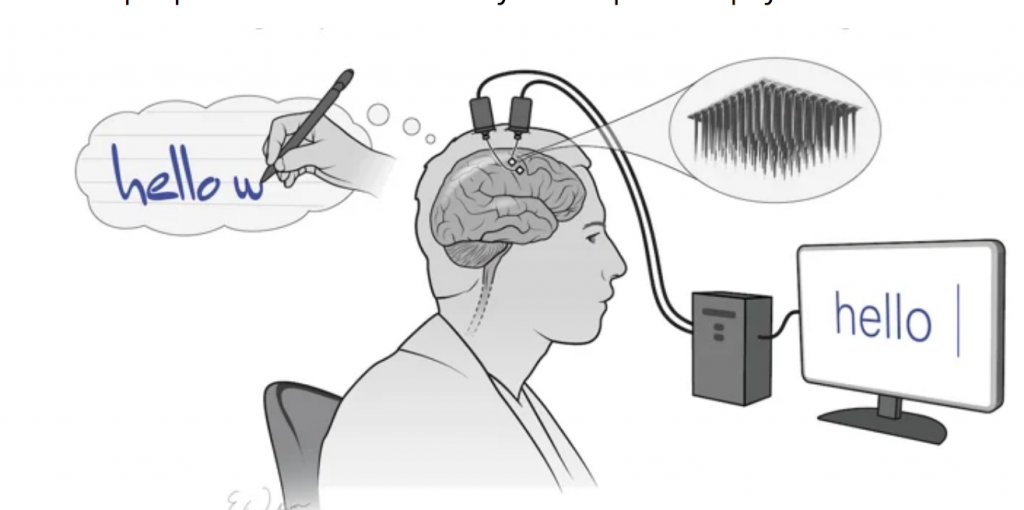
A diagram of how the system works. (F. Willett et al., Nature, 2021, Erika Woodrum)
Quadriplegic Man Learns to Writer with Assistance of Brain-Computer Interface
The AI-driven world in which we find ourselves is producing miracles. Changes in the medical field are leading to these amazing advancements. This week a story on sciencealert.com features another unbelievable medical step forward.
A man paralyzed from the neck down due to a spinal cord injury can communicate his thoughts, thanks to a brain implant system that translates his imagined handwriting into actual text.
The device—part of a longstanding research collaboration called BrainGate—is a brain-computer interface (BCI), that uses artificial intelligence (AI) to interpret signals of neural activity generated during handwriting. How intriguing is that?
The man, 65, was paralyzed in 2007 from a car accident. Given the name T5, his hand didn’t actually do the writing, but his thoughts did.
But during the experiment, reported in Nature earlier in the year, the man concentrated as if he were writing by thinking about making the letters with an imaginary pen and paper. In tests, the man was able to achieve writing speeds of 90 characters per minute (about 18 words per minute), with approximately 94 percent accuracy (and up to 99 percent accuracy with autocorrect enabled).
Being able to interface with an algorithm and communicate sentient thoughts into printed words while unable to move was not possible before AI. The question now is what isn’t possible with AI?
“This new system uses both the rich neural activity recorded by intracortical electrodes and the power of language models that, when applied to the neurally decoded letters, can create rapid and accurate text,” says first author of the study Frank Willett, a neural prosthetics researcher from Stanford University.
Finding out how much the brain can retain in each experiment will be the next step in the research.
“We’ve learned that the brain retains its ability to prescribe fine movements a full decade after the body has lost its ability to execute those movements,” Willett says.
“And we’ve learned that complicated intended motions involving changing speeds and curved trajectories, like handwriting, can be interpreted more easily and more rapidly by the artificial-intelligence algorithms we’re using than can simpler intended motions like moving a cursor in a straight path at a steady speed.”
This isn’t the first time the neural link between man and AI has been attempted. Similar systems developed as part of the BrainGate have been transcribing neural activity into text for several years, but many previous interfaces have focused on different cerebral metaphors for denoting which characters to write, such as point-and-click typing with a computer cursor controlled by the mind.
The article explains the process T5 has to go through to produce the thought to words results. It’s not easy and it’s not a total return to normal for T5. But it is proof that the concept is workable and it will definitely open the door to far more complicated interfaces in the future.
read more at sciencealert.com







Leave A Comment